![PDF] The DSM Diagnostic Criteria for Sexual Aversion Disorder | Semantic Scholar PDF] The DSM Diagnostic Criteria for Sexual Aversion Disorder | Semantic Scholar](https://d3i71xaburhd42.cloudfront.net/ed4a14418174832fd1b88e4724ac107bedc238a9/2-Table1-1.png) PDF] The DSM Diagnostic Criteria for Sexual Aversion Disorder | Semantic Scholar
PDF] The DSM Diagnostic Criteria for Sexual Aversion Disorder | Semantic ScholarChugging Water All the time? How to Avoid Overhydration It is easy to believe that when it comes to hydration, it is more always better. We have all heard that the body is made mostly of water and that we should drink about eight glasses of water a day. We are told that drinking abundant amounts of water can clean our skin, cure our colds and help in weight loss. And everyone seems to have a giant reusable water bottle these days, constantly filling in. So shouldn't we be revolving H2O at every opportunity? Not necessarily. While getting enough water is very important for your overall health, it is also possible (although uncommon) to consume too much. Dehydration may always be in focus, but overhydration also has some serious adverse health effects. Here's a look at what happens when you drink too much water, which is at risk, and how to make sure to keep you properly — but not too much — hydrated. Keeping hydrated is important for body functions such as blood pressure, heart rate, muscle performance and cognition. However, "adequatehydration" is notoriously difficult to define. Liquid needs vary according to age, sex, diet, level of activity and even time. Health conditions such as kidney disease and pregnancy can also alter the amount of water a person should drink every day. Certain medicines can also affect the fluid balance of the body. Even your own individual hydration needs can change from day to day. In general, most experts recommend calculating half of their weight and drinking that number of ounces a day. For example, a person of 150 pounds could strive for a total of 75 ounces (oz.), or 2.2 liters (L). The Institute of Medicine also provides guidelines for adequate water consumption for children and adults. Intake of daily water by ageThese target amounts include not only water and other fluids that drink, but also water from food sources. Several foods can provide liquids. Foods such as soups and powders are recognizable sources, but less obvious products such as fruits, vegetables and dairy products also contain significant amounts of water. Therefore, you do not need only H2O chug to stay hydrated. In fact, other fluids may contain the necessary nutrients that you do not get from regular water that are important to your health. While we all need a lot of water to maintain good health, the body has its limits. In rare cases, overloading of liquids may have dangerous consequences. How much is too much? There is no difficult number, as factors such as the age and pre-existing health conditions can play a role, but there is a general limit. "A normal person with normal kidneys can drink [approximately] up to 17 liters of water (34 bottles of 16 oz) if taken slowly without changing his serum sodium," says nephrologist Dr. John Maesaka. "The kidneys will excrete all excess water quickly," says Maesaka. However, the general rule is that the kidneys can only excrete over . So the speed at which someone drinks water can also change the body tolerance for excess water. If you drink too fast, or your kidneys don't work properly, you can get to a state of overhydration before. The body strives to constantly maintain a state of balance. A part of this is the proportion of fluid to electrolytes in the bloodstream. We all need certain amounts of electrolytes such as sodium, potassium, chloride, and magnesium in our bloodstream to keep our contracting muscles, nervous system operation, and the acid base levels of the body in control. When you drink too much water, you can interrupt this delicate relationship and get rid of balance, which is, without surprise, not good. The electrolyte of the greatest concern with overhydration is sodium. Too much fluid will dilute the amount of sodium in the bloodstream, leading to abnormally low levels, called. Symptoms of hyponatremia can be mild at first, such as a feeling of nausea or swelling. Symptoms can become severe, especially when sodium levels suddenly drop. Serious symptoms include: You may have heard the term "water poisoning" or "water poisoning," but these are not the same as hyponatremia. "Hyponatremia simply means that serum sodium is low, defined as less than 135 mEq/liter, but water poisoning means that the patient is symptomatic of low sodium," says Maesaka. Without treatment, water poisoning can cause brain disturbances, as without sodium to regulate the fluid balance within cells, the brain can swell to a dangerous degree. Depending on the level of inflammation, water poisoning may result in coma or even death. It is rare and quite difficult to drink enough water to reach this point, but dying to drink too much water is totally possible. If you are healthy, it is unlikely that you will develop serious problems as a result of drinking too much water. "Our kidneys do an excellent job to eliminate excess fluids from our body with the process of urination," says dietitian, who specializes in the treatment of kidney disease. If you are taking large amounts of water in an effort to stay hydrated, you will most likely need frequent trips to the bathroom than a trip to the ER. However, some groups of people have a higher risk of hyponatremia and water poisoning. One of these groups is people with kidney disease, as the kidneys regulate the balance of fluids and minerals. "People with late kidney disease may be at risk of overhydration, as their kidneys cannot release excessive water," says Hernández. Overhydration can also occur in athletes, especially those involved in resistance events, such as marathons, or in hot weather. "Athletes who train for several hours or outdoors often run a higher risk of overhydration by not replacing electrolytes such as potassium and sodium," says Hernández. Athletes must be aware that electrolytes lost through the sweat cannot be replaced with water alone. An electrolyte replacement drink can be a better choice than water during long exercise combats. Initial signs of overhydration can be as simple as changes in your bathing habits. If you find yourself needing to urinate so often that it disrupts your life, or if you have to go several times during the night, it may be time to reduce your consumption. Urine that is another indicator that may be that overcomes it. Symptoms that indicate a more serious overhydration problem include those associated with hyponatremia, such as: If you are worried, talk to your doctor. You can perform a blood test to check your serum sodium levels and recommend treatment if necessary. It is debatable if there is truth in adage, "If you are thirsty, you are already dehydrated." However, it is certainly a good idea to drink when you feel thirsty and choose the water as often as possible. Just make sure you get up. "Aim to drink water slowly all day instead of waiting too long and down a whole bottle or glass at a time," says Hernández. Be especially careful after a long and sweaty training. Even if your thirst feels unshakable, it resists the impulse of chug bottle after bottle. To hit the sweet spot for liquid intake, some people find it useful to fill a bottle with their recommended proper intake and constantly drink it all day. This can be especially useful for those who struggle to drink enough, or simply to get an image of a proper daily amount. For many, however, it is more practical to monitor the body for proper hydration signals than to focus on hitting a specific number of liters per day. Signs that are properly hydrated If you have kidney disease or other condition that affects your body's ability to excrete excess water, it is important to follow your doctor's liquid consumption guidelines. They can better assess their individual health and needs. It can be instructed to limit your water consumption to prevent dangerous electrolyte imbalance. In addition, if you are an athlete — especially participating in resistance events such as marathon running or long-range bike — your hydration needs on the day of the race seem different to a regular day. "Having an individualized hydration plan in place before running a longer event is important," says the sports medicine doctor, who serves as an on-site doctor for the Ironman triathlons. "Know your relative sweat rates and how much you need to drink to maintain normal hydration. The best way is to measure body weight before and after exercise. Weight change is an approximate estimate of the amount of fluid lost in sweat, urine, and breathing. Every pound of weight loss is approximately 1 pin (16 ounces) of liquid loss." Although it is important to know your sweat rates, you do not need to obsess completely about hydration while exercising. "The current recommendations are to drink thirst," says Martinez. "You don't need to drink at every help station during a race if you don't thirst." Be careful, but don't think too much. Finally, although it is normal to have thirst occasionally all day (especially in hot weather), if you notice that you feel the need to drink constantly, consult your doctor. This can be a sign of an underlying condition that needs treatment. Sarah Garone, NDTR, is a nutritionist, independent health writer and food blogger. She lives with her husband and three children in Mesa, Arizona. Find your information on health and nutrition from below to the ground and (mostly) healthy recipes. Last medical review on June 27, 2019Read this following
Links of accessibility Search results Web results Fear of privacy: signs, causes and strategies of coping People also ask results on the web Test: How do you manage privacy? ← PsychologyThe fear of intimacy Summary: Causes, symptoms and treatments Appendix A Temor of Intimacy EscaleSex Evitation and Disorders of Anxiety - The Center for ...

Sexual Aversion Disorder (SAD) - What Can Be Expected? - By Dr. Ashwini Vivek (Gandhi) | Lybrate
PDF) The DSM Diagnostic Criteria for Sexual Aversion Disorder
Sexual Desire Disorders - Mind Psychology - Lecture Slides - Docsity![PDF] The DSM Diagnostic Criteria for Sexual Aversion Disorder | Semantic Scholar PDF] The DSM Diagnostic Criteria for Sexual Aversion Disorder | Semantic Scholar](https://d3i71xaburhd42.cloudfront.net/ed4a14418174832fd1b88e4724ac107bedc238a9/5-Table2-1.png)
PDF] The DSM Diagnostic Criteria for Sexual Aversion Disorder | Semantic Scholar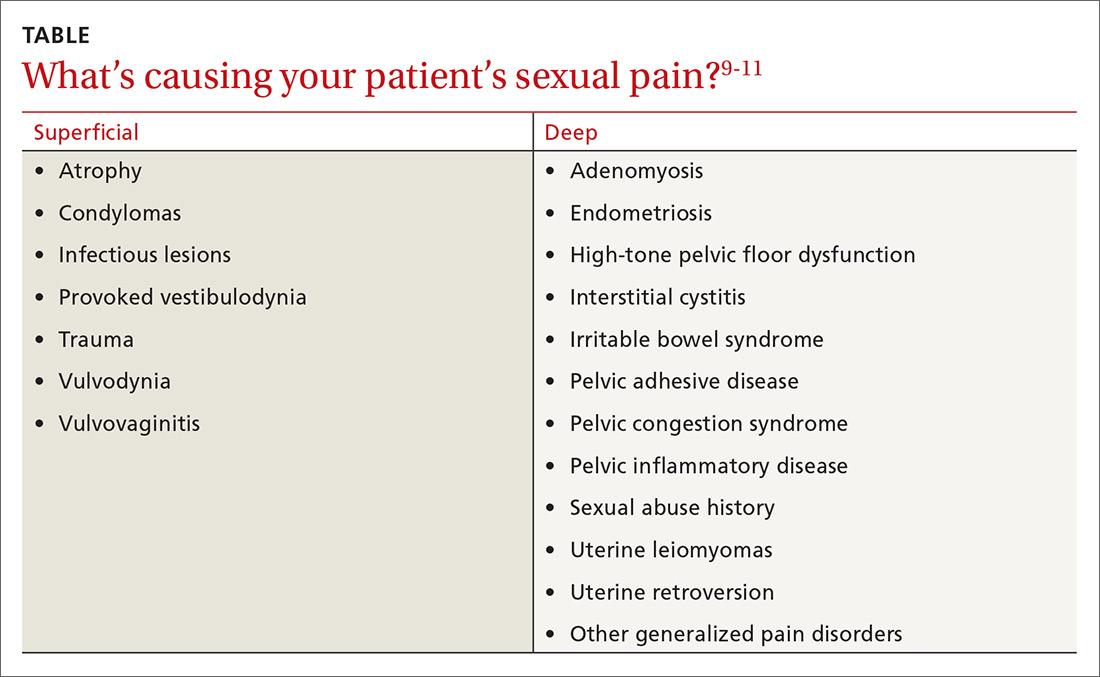
The evaluation and management of female sexual dysfunction | MDedge Family Medicine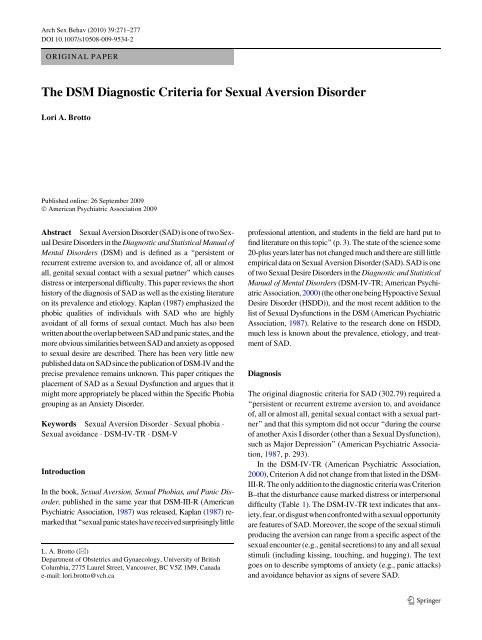
The DSM Diagnostic Criteria for Sexual Aversion Disorder - UBC ...
Human Sexuality Dr Aseni Gammampila. - ppt video online download
Quiz & Worksheet - Types & Phases of Sexual Dysfunction | Study.com
Female Sexual Dysfunction
Sex Avoidance and Anxiety Disorders - The Center for Treatment of Anxiety and Mood Disorders
Comparison of the old and new classifications for female sexual... | Download Scientific Diagram
Sexual Aversion Disorder; Causes, Symptoms, Treatment |
Chapter Fourteen Challenges to Sexual Functioning. - ppt download
Blog Therapy, Therapy, Therapy Blog, Blogging Therapy, Therapy,..
Female sexual dysfunction: the important points to remember
Clinical Practice Guidelines for Management of Sexual Dysfunction. - Abstract - Europe PMC
The DSM Diagnostic Criteria for Sexual Aversion Disorder - UBC ...
Clinical Practice Guidelines for Management of Sexual Dysfunction. - Abstract - Europe PMC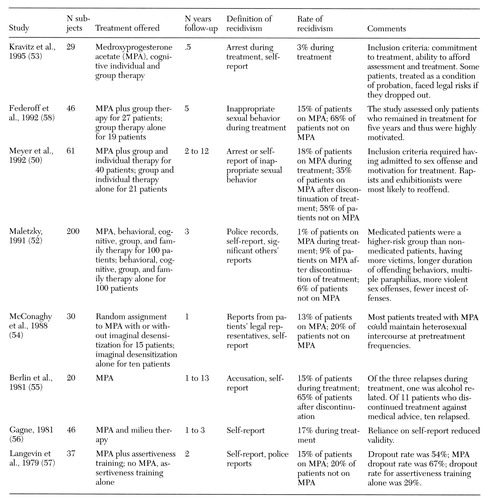
Are Sex Offenders Treatable? A Research Overview | Psychiatric Services
Dealing with female sexual dysfunction. Dealing with female sexual dysfunction.
Sexual Dysfunctions, Paraphilias, and Gender Dysphoria - Nurseslabs
PDF) Evaluation and treatment of female sexual disorders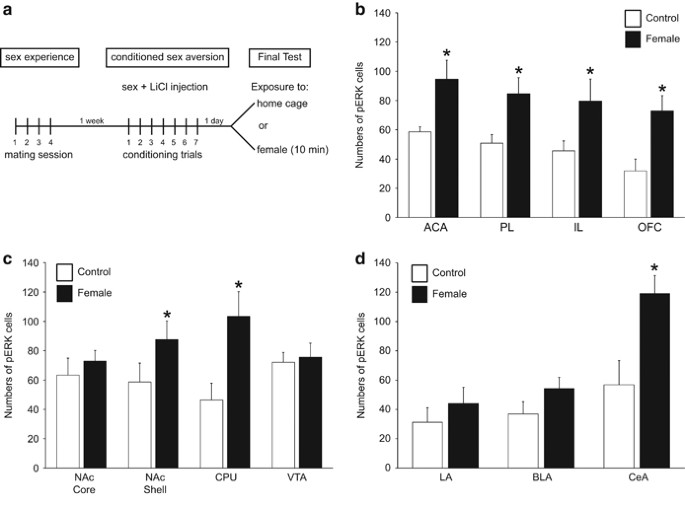
Maladaptive Sexual Behavior Following Concurrent Methamphetamine and Sexual Experience in Male Rats is Associated with Altered Neural Activity in Frontal Cortex | Neuropsychopharmacology
The Evolution of the Female Sexual Disorder/Dysfunction Definitions, Nomenclature, and Classifications: A Review of DSM, ICSM, ISSWSH, and ICD - Sexual Medicine Reviews
JCM | Free Full-Text | Creating and Validating the DESEA Questionnaire for Men and Women | HTML
What Is a Sexual Dysfunction? - Definition, Phases & Types - Abnormal Psychology Class (Video) | Study.com
Women's Sexual Health Problems | Springer Publishing
Female Sexual Dysfunction Specialist Midtown | Sex Doctors NYC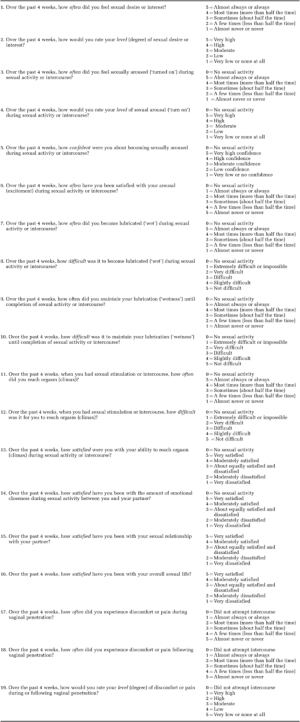
Female sexual dysfunction in a population-based study in Iran: prevalence and associated risk factors | International Journal of Impotence Research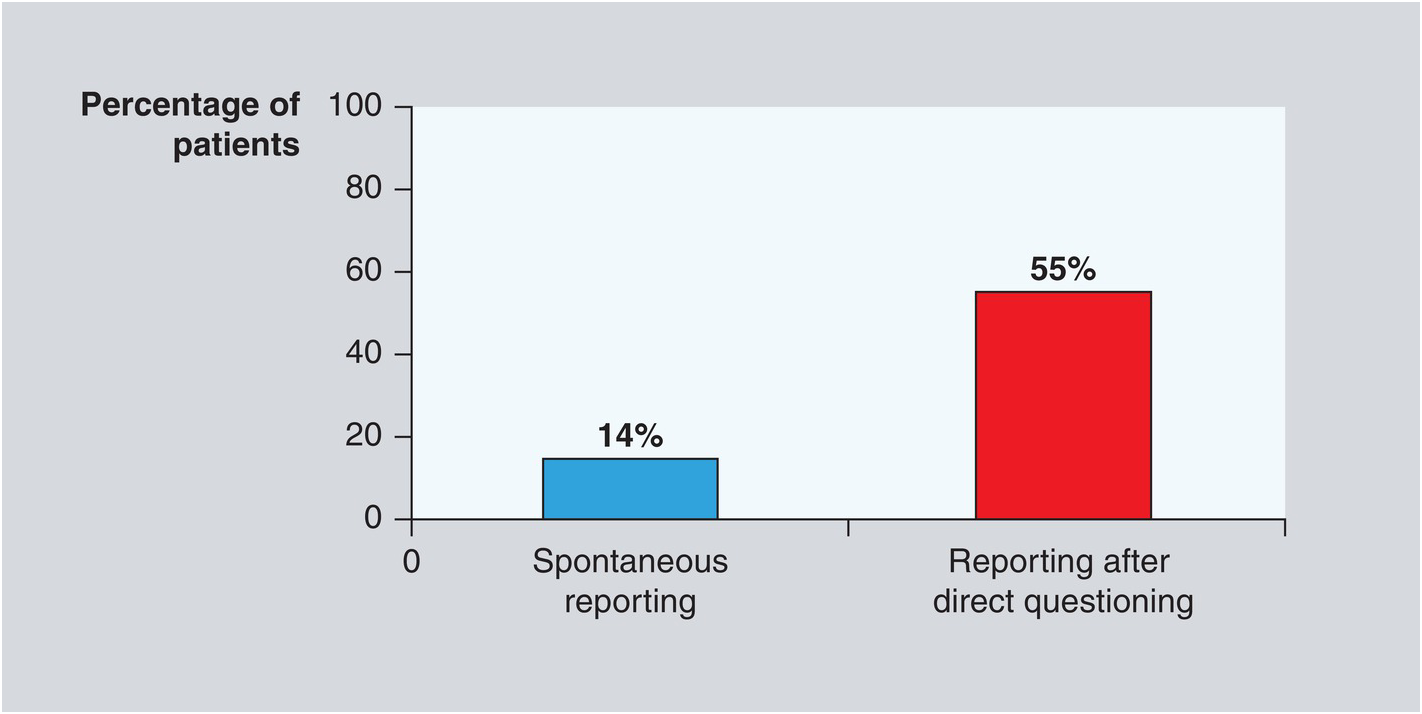
Female sexual dysfunction (Chapter 5) - Clinical Gynecology
Sexual dysfunction part – 2 | Statistical analysis | TopMedx
8-sexual disorders - YouTube
Here's What You Must Know About Sexual Aversion Disorder | Femina.in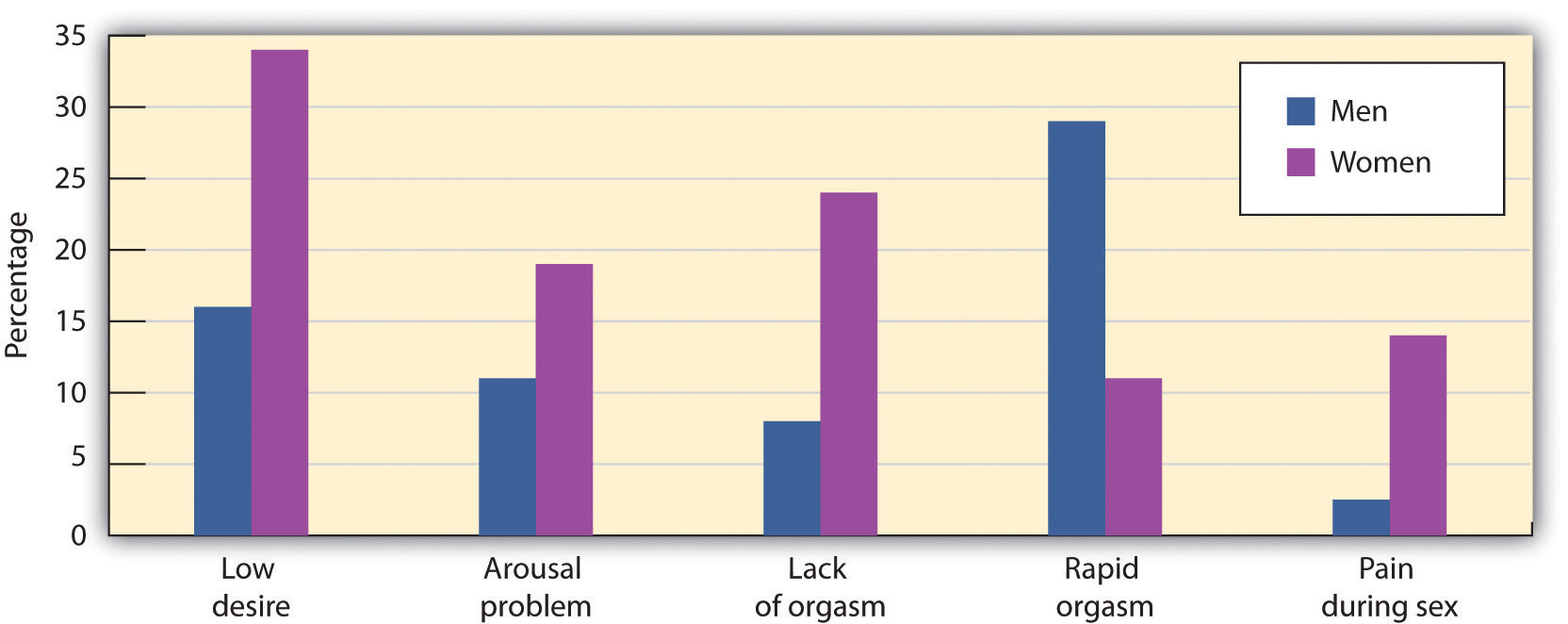
12.6 Somatoform, Factitious, and Sexual Disorders – Introduction to Psychology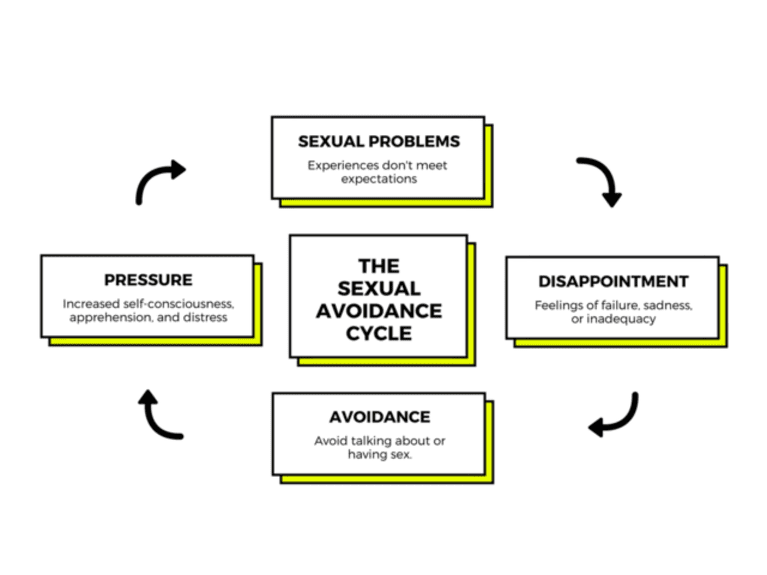
What The Sexual Avoidance Cycle Is And How To Break It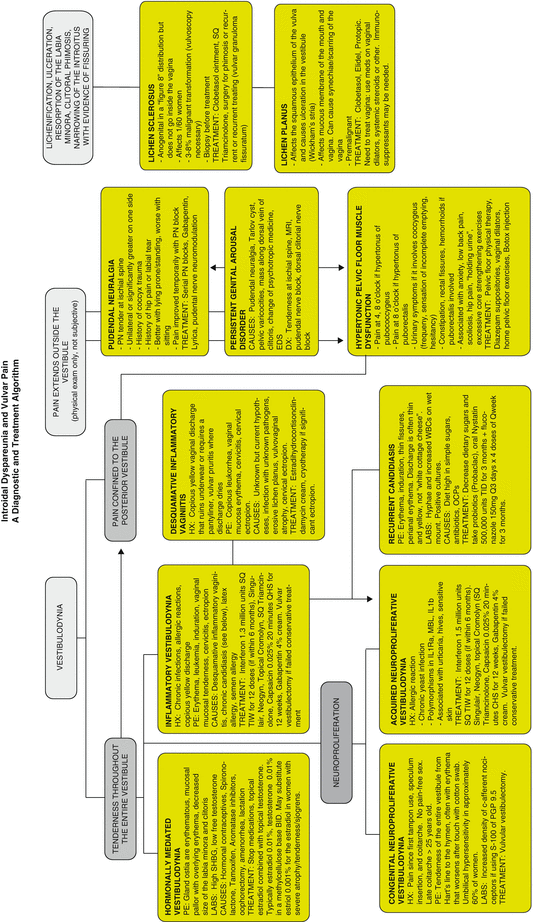
Diagnosis and Management of Sexual Pain Disorders: Dyspareunia | SpringerLink![Full text] Sexual function and distress in postmenopausal women with chronic inso | NSS Full text] Sexual function and distress in postmenopausal women with chronic inso | NSS](https://www.dovepress.com/cr_data/article_fulltext/s213000/213941/img/NSS_A_213941_T0002.jpg)
Full text] Sexual function and distress in postmenopausal women with chronic inso | NSS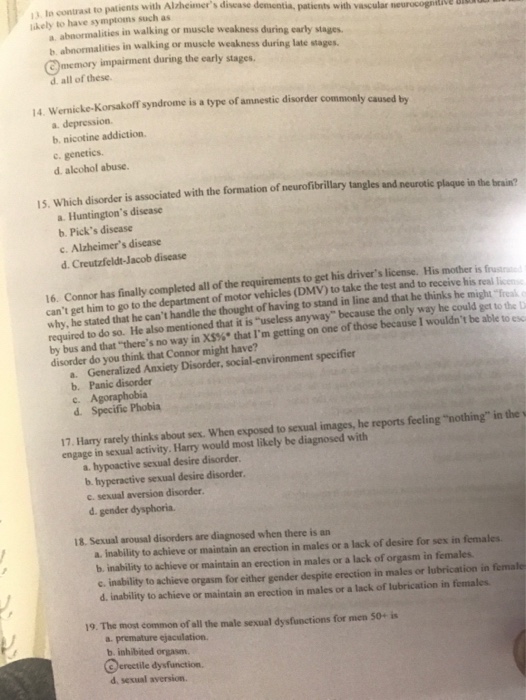
To Patients With Alzheimer's Discase Dementia, Pat... | Chegg.com
![PDF] The DSM Diagnostic Criteria for Sexual Aversion Disorder | Semantic Scholar PDF] The DSM Diagnostic Criteria for Sexual Aversion Disorder | Semantic Scholar](https://d3i71xaburhd42.cloudfront.net/ed4a14418174832fd1b88e4724ac107bedc238a9/2-Table1-1.png) PDF] The DSM Diagnostic Criteria for Sexual Aversion Disorder | Semantic Scholar
PDF] The DSM Diagnostic Criteria for Sexual Aversion Disorder | Semantic Scholar


![PDF] The DSM Diagnostic Criteria for Sexual Aversion Disorder | Semantic Scholar PDF] The DSM Diagnostic Criteria for Sexual Aversion Disorder | Semantic Scholar](https://d3i71xaburhd42.cloudfront.net/ed4a14418174832fd1b88e4724ac107bedc238a9/5-Table2-1.png)






























![Full text] Sexual function and distress in postmenopausal women with chronic inso | NSS Full text] Sexual function and distress in postmenopausal women with chronic inso | NSS](https://www.dovepress.com/cr_data/article_fulltext/s213000/213941/img/NSS_A_213941_T0002.jpg)

Posting Komentar untuk "sexual aversion disorder test"